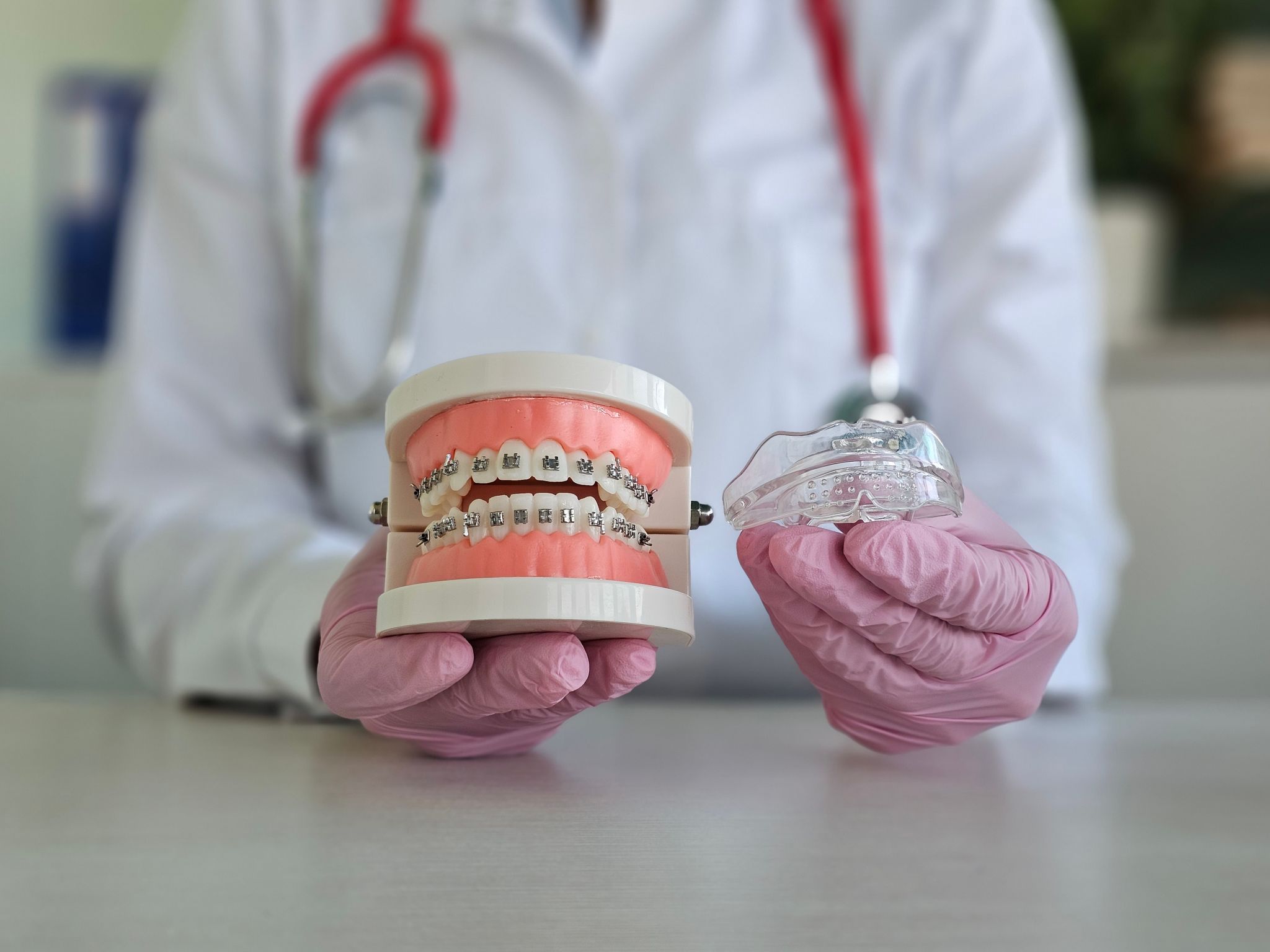How to Choose Between Braces and Invisalign: A Complete Comparison
Understanding the Basics: Braces vs. Invisalign
Choosing between braces and Invisalign can be a daunting task. Both options are designed to straighten teeth and improve oral health, but they have distinct differences that may sway your decision. This guide will help you understand the basics of each method, so you can make an informed choice that suits your needs and lifestyle.
Braces are the traditional method of teeth straightening and involve metal brackets and wires that are attached to the teeth. Invisalign, on the other hand, uses a series of clear, removable aligners to gradually shift teeth into place. While both methods are effective, they offer different advantages and disadvantages.

Appearance and Aesthetics
One of the most noticeable differences between braces and Invisalign is their appearance. Braces are quite visible due to their metal brackets and wires. Some people may feel self-conscious about their appearance during the treatment period, which can last several years depending on the case.
In contrast, Invisalign aligners are made of clear plastic and are virtually invisible when worn. This makes them an attractive option for teens and adults who want a discreet way to improve their smile without drawing attention to their orthodontic treatment.
Comfort and Convenience
Comfort is another important factor to consider. Traditional braces can cause discomfort, especially after adjustments, as they use constant pressure to move teeth. Patients may experience sore spots in the mouth where wires or brackets rub against the cheeks or gums.

Invisalign aligners are generally more comfortable as they are smooth and custom-fit to your teeth. There are no wires or brackets to irritate the mouth, and they can be removed for eating, drinking, brushing, and flossing, adding a level of convenience that braces do not offer.
Effectiveness and Treatment Time
Both braces and Invisalign are effective at correcting a wide range of dental issues, including crooked teeth, overcrowding, and bite problems. However, the complexity of your dental issues might make one option more suitable than the other.
Braces are often recommended for more severe cases or complex dental problems. They give orthodontists more control over the movement of each tooth, which can lead to more precise results. Treatment with braces typically takes between 18 months to 3 years.

Cost Considerations
The cost of braces versus Invisalign can vary depending on several factors such as geographic location, the complexity of your case, and the specific orthodontic provider. In general, both treatments are comparable in price, although Invisalign might be slightly more expensive due to the technology involved.
It is important to consult with your orthodontist about costs and payment plans. Some insurance plans cover orthodontic treatments partially, so be sure to check your policy details to understand what is covered.
Maintenance and Care
Maintenance for both braces and Invisalign is crucial for achieving the best results. With braces, regular dental visits are required to adjust the wires and ensure everything is working as it should. Proper oral hygiene is essential to avoid plaque buildup around the brackets.
Invisalign requires a different type of maintenance. Aligners need to be cleaned regularly and should be worn for 20-22 hours a day for optimal results. Failure to comply with this can extend the treatment time significantly.
Making Your Decision
The decision between braces and Invisalign ultimately depends on your personal preferences, lifestyle, and the specific needs of your teeth. Consulting with an experienced orthodontist can provide valuable insights tailored to your situation.
By understanding the differences in appearance, comfort, effectiveness, cost, and maintenance between braces and Invisalign, you can make a well-informed decision that will lead you toward a healthier, more confident smile.
